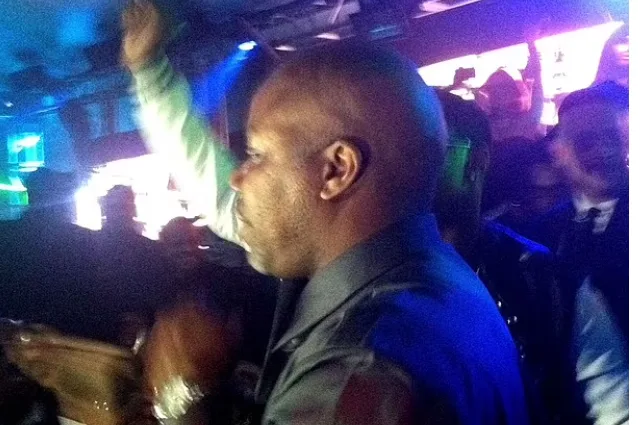INVESTIGATIVE REPORT:
Diddy Caught on Camera Partying at Playboy Mansion Hours Before Overdose
By Ricky Awodi|Parrot Newspaper Investigative Desk
As Sean “Diddy” Combs battles racketeering and sex-trafficking charges in federal court, new layers of scandal are emerging that paint a disturbing picture of fame, power, and control. This is not just a celebrity trial—it is an unraveling of one of the music industry’s most enigmatic moguls, and at the heart of it is a woman fighting to be heard.
“I’m Somebody’s Child”: Cassie’s Chilling Testimony
In a striking moment that silenced the courtroom, Cassie Ventura, Diddy’s former partner, looked directly at the accused and declared: “I’m not a rag doll. I’m somebody’s child.” Her voice was calm, but the weight of her words cut deep.
Cassie, now eight months pregnant, delivered composed yet harrowing testimony. She accused Diddy of repeated abuse—physical, emotional, and sexual—describing him as a man spiraling in drug addiction and wielding unchecked control over her life.
According to her, the relationship continued even after he allegedly beat her, and she admitted under questioning that she did not hate him then, nor does she now. She also acknowledged cheating on her now-husband with Diddy during that period.
Diddy’s defense team countered with messages in which Cassie expressed love for him, attempting to blur the line between consent and coercion. But Ventura remained unfazed, saying she felt she couldn’t escape his grip, calling him an “out-of-control drug addict” who raped her and controlled her movements.
The Playboy Mansion Overdose: A Timeline Reemerges
Now, a damning piece of Diddy’s past is resurfacing—one that could shift public perception and perhaps courtroom momentum.

Photos recently uncovered show Combs at the Playboy Mansion, partying hours before he suffered a painkiller overdose in February 2012. His defense attorney brought up the incident in court, questioning Cassie about what transpired that night. While the defense appeared to use the overdose as a means to humanize Combs or imply instability, the revelation is gaining fresh scrutiny in light of Ventura’s allegations.
The February 2012 overdose was never fully examined in public. At the time, it was downplayed as a private health scare. But now, in the context of allegations about drug-fueled “freak-off” parties—events Ventura described as degrading and exploitative—the incident is being re-evaluated.
Courtroom Chaos and Late-Night Tactics
The courtroom has been tense not only due to testimony but also because of the defense’s aggressive legal maneuvers. U.S. District Judge Arun Subramanian publicly admonished Diddy’s team for filing documents in the dead of night, sometimes as late as 3 a.m., leaving the court with little time to process them.
“This is a problem,” the judge said. “We’re running out of time to address issues.”
What the Evidence Suggests
This trial is no longer just about Cassie Ventura’s word against Diddy’s denials. It is slowly becoming a forensic inquiry into a pattern of behavior—a mosaic of excess, manipulation, and blurred moral lines.

From the text messages and emotional entanglements to the newly resurfaced Playboy Mansion photos and decades-old overdose, each element forms a puzzle. The defense hopes to convince the jury that Cassie’s continued relationship with Diddy undermines her claims. But the prosecution appears to be crafting a larger narrative—one of trauma, control, and a culture of silence finally breaking.
Combs has pled not guilty to all charges. But if convicted, the man once known for shaping music’s biggest moments could be facing decades behind bars.
For now, the world watches as a once-private relationship—and the powerful man behind it—is laid bare in federal court.


